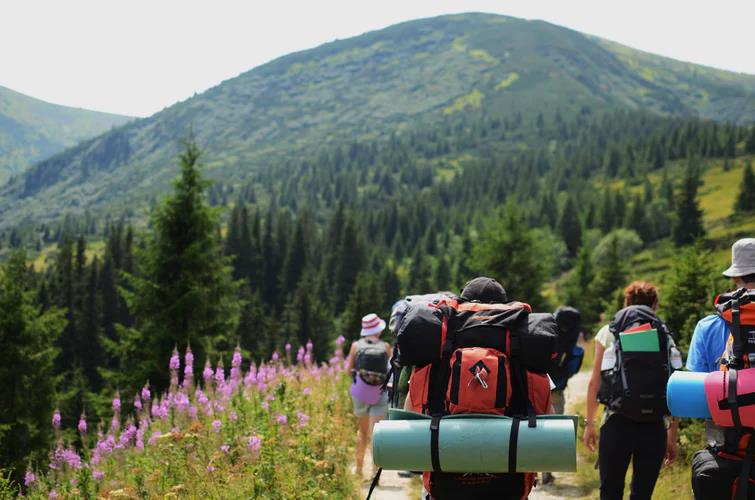Basic Principles of Going Lighter
A GUEST POST BY ASHLEY LIPMAN
Photo credit: https://unsplash.com/photos/FHTq58aDvjc
We live in a beautiful world. There are many places that are still in their natural state. These are places that allow us to step away from the society we have created and to enjoy a world that is unscared by men.
This is the draw that calls a hiker to the mountain trails. There is a drive to go higher. To rely only on their own skill and power and to conquer the trails with solo expeditions. But drive and desire are not enough.
A hiker must respect the power of the force he is challenging. Attempting a trek without proper gear, and before he is properly trained, can result in disaster. The first rule in hiking is know your limits. You will not know if a piece of your gear is high-quality until you are forced to rely on it.
Getting to the point where one can explore solo while going light and being safe is a goal. It is not something you can do without some miles under your boots. As you mature into the world of exploration, your load will become lighter. When you find your comfort level, you will develop your pack around it.
Going lighter is a term that means adjusting the weight of the gear you carry on your treks. A very new hiker will clean out the sporting goods store. He will look like a pack mule when he arrives at the trail. He will heft that load on his back, clip things to his belt, hang things around his neck and slowing make the first few steps. Within an hour he feels like hi just pushed a bus up the side of a mountain. He is sore and worn out. He is probably dehydrated from the strain and the fact that he needs to put something down to open his canteen.
On his next hike, he shows up with half the gear and a much lighter load. He does well. He is still not going light, but he is progressing. As his skill level increases, his needs will be fewer. It is a process. It takes time and experience.
Picture credit: https://unsplash.com/photos/z-BXGZbLdS0
Principles of going lighter
Safety above all else
This is very much a personal design. You have no bar you have to reach. You will develop at your own pace. Be aware of the way your body reacts to different conditions. Going lighter is more than just reducing your load. It is designing a load that is comfortable in the conditions you are exposed to.
Do some research
Many people make a list of essentials that they expect to need. But if you have not researched the area where you are going, you do not really know what the essentials are. For example, if you are hiking during winter months, you need a sleeping bag that is made to keep you warm. It will be thicker. You may also take a sleep mat to protect you further, from the cold earth. This is the right choice. However, if you are hiking through an area that is hot and humid, with little rain, you do not need to carry that much weight. A light duty sleeping bag will do.
Double Duty
Once you have constructed your essentials, look again. Try to find items that can serve more than one purpose. For example, a pot can serve as a pot, bowl, cup, and basket for carrying things. A sleeping mat can double as a comfortable sitting spot and by using your poles, it can provide shade or protect you from the rain. Taking a few bandanas takes up very little space. You can tie them around your head or neck to absorb sweat and cool you. Use them as a washcloth, a towel, a handkerchief, and a face shield if sand is blowing. You can use them to strain water and to life hot pots from the fire. A plastic poncho protects you from the rain and makes a pretty good tarp to sleep under.
the gear you wear
The weight of the gear on your body will affect you. You should carefully consider each item. There are times when the trail, weather, and terrain require a quality pair of heavy boots. There is an old saying, one pound of weight on your feet equals to 5 pounds of weight on your back. In order to determine the right footwear, you must consider what purpose they serve. If you are hiking in a place where you must protect your ankles from the danger of injury, brush, and branches, and sharp rocks, you need heavy boots. If the trail is less complicated and there is little chance of injury or snake bite, a good hiking shoe may be fine. If you are not sure, go with the boot. It is better to have them and not need them than to need them and not have them. As your experience level rises, it will become easier to judge.
You have chosen a sport that is very rewarding. The effort you invest in hiking is rewarded with the magical revelations of the world around you. This is a world that many never experience. Go at your own rate and do not compare your growth with anyone else's. There is no right or wrong way to develop. The terrain may be unforgiving, but you will overcome, with patience, dedication, and an open mind.
AUTHOR BIO
Ashley Lipman is a super-connector with Outreachmama who helps businesses find their audience online through outreach, partnerships, and networking. Her professional interest lies in ecology and nature and she often writes about perks of spending more time outdoors, adventure activities and exploring the planet.




